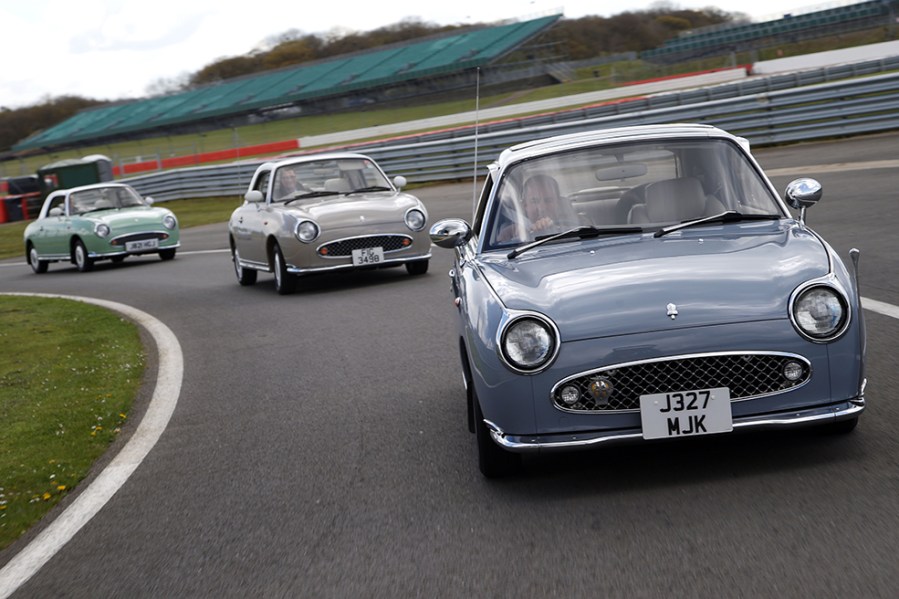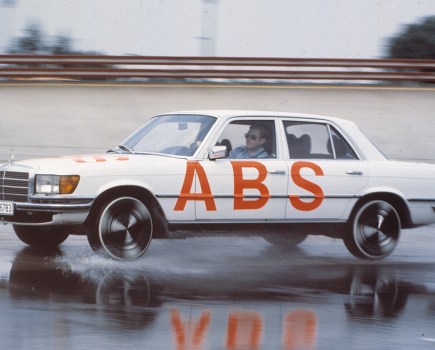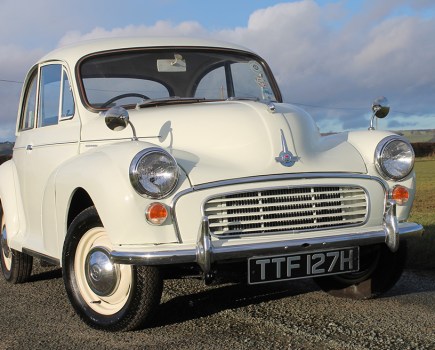With 70s and 80s car styling seemingly back on-trend, we take a look back at the history of retro designs in the modern era
Automotive styling has evolved over the years as it has negotiated changing customer tastes, wider economic circumstances and inevitable technological progress. It a process that continues today, albeit with with the benefit of hindsight – and a considerable back catalogue of iconic classics from which to take inspiration.
The broader style of today’s cars can be traced back to the post-war era when a switch from largely separate-mudguard designs arose from a growing interest in aerodynamics. While a few streamliner-type models had appeared during the war from the likes of Bugatti and Tatra, it’s the Cisitalia Berlinetta of 1946 that’s credited as one of the first designs to incorporate a cohesive front end as we recognise it today.
Car design in Italy continued in a similarly beautiful vein from here onwards, while in America a number of more extravagant models began to appear as the country’s economy boomed. Cars (and their fins) grew as the 1950s dawned and these influences soon made their way back over the sea to Europe.
Designers in the 50s and 60s were resolutely forward-thinking, with many examples of futurism making it into the mainstream. The Citroën DS is one such car, along with the Jestons-esque concept cars produced by GM and Ford at the time.

Forward-thinking, futuristic designs were common in the 50s and 60s
The late 60s and early 70s brought more angular designs along with the advent of the ‘wedge’, thanks largely to the talents of Marcello Gandini and Giorgetto Giugiaro, while the gradual phasing-out of round headlights came as technology allowed for larger, more efficient rectangular items.
More widespread use of computers in the design process in the late 70s and early 80s signaled another step change. Rather than relying on the perceived aerodynamic soundness of a flowing streamliner-style design or low-slung wedge, designers could begin to model their cars specifically to be as efficient as possible.
By the end of the 1980s the market was filled with more homogeneous designs, each intended to reduce drag and increase fuel economy in the wake of the fuel crisis. Ford was at the forefront of this movement, with the Sierra and Taurus selling on their aero credentials and setting the trend for competitors on both sides of the Atlantic.
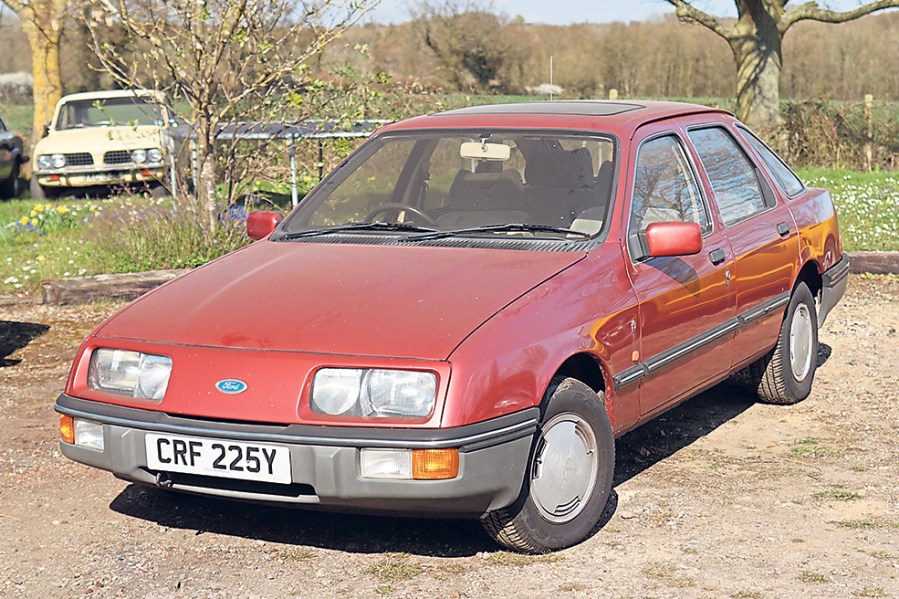
The ‘jellymould’ style of the Ford Sierra was the product of a focus on aerodynamics
1960s retro design: Nissan Pike Factory and beyond
In Japan, the late-80s economic bubble had seen the country’s car manufacturers filling every conceivable niche with exciting cars amid booming sales. Among these were Nissan’s Pike Factory models, a line-up of refreshingly backwards-looking designs that stood out for all the right reasons from the ‘jellymould’ revolution.
The progenitor of the phenomenon was the Nissan Be-1, a retro-styled rebody of the K10 Nissan Micra that looked something like a mash-up of the Mini and a Fiat 126. The car’s success cemented Nissan’s commitment to the full Pike Factory project.
The Nissan Pao of 1989 duly stepped up the retro trend with strong 1960s design cues throughout, including external door hinges, chrome bumpers, corrugated panels and round lights front and rear. The result was a new car that appeared much older to the untrained eye, offering buyers a nostalgic option without the perils of classic car ownership. This approach continued with the most famous Pike Factory model of all, the Nissan Figaro, whose cute proportions and neat design perfectly captured the essence of a 1960s roadster but with rock-solid Micra underpinnings. The S-Cargo van, meanwhile, did very little to hide its clear ‘Tin Snail’ inspiration.
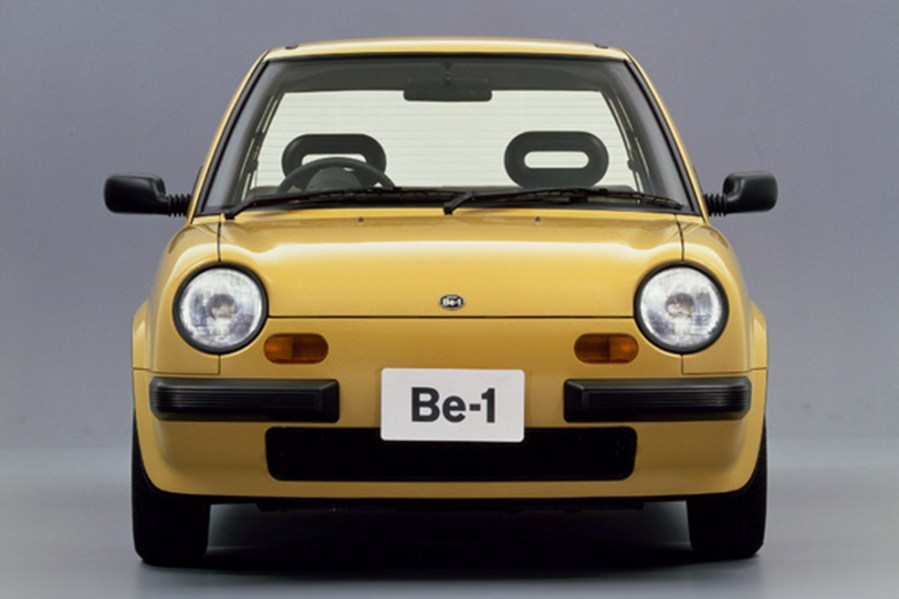
The success of the Nissan Be-1 convinced the firm to double-down on 60s-style retro designs
While only officially offered in the Japanese domestic market, the Pike Factory cars and their success can be considered as a catalyst for what would follow. More immediate imitators of the cute-retro recipe were originally found in the ranges of other Japanese manufacturers, but the phenomenon extended to Europe with the arrival of Volkswagen’s New Beetle in 1997, a car whose design divided opinion yet proved a huge success.
Ford was at the helm at Jaguar when the X300 XJ and S-Type were introduced in 1994 and 1998 respectively, each styled with considerable deference to the brand’s iconic 1960s saloons. Rumour has it that Jaguar resisted the retro approach for the latter car but Ford forced its hand; whether that was a good thing is still up for debate. Indeed, Jaguar wouldn’t graduate from its retro phase until 2010 with the arrival of the X351 XJ.
The S-Type was introduced at the same 1998 British Motor Show as the Rover 75, another product of a British legacy brand under foreign ownership. Arguably a more successful treatment than its Jaguar showmate, the 75 incorporated cues from Rover’s iconic 50s and early 60s models.
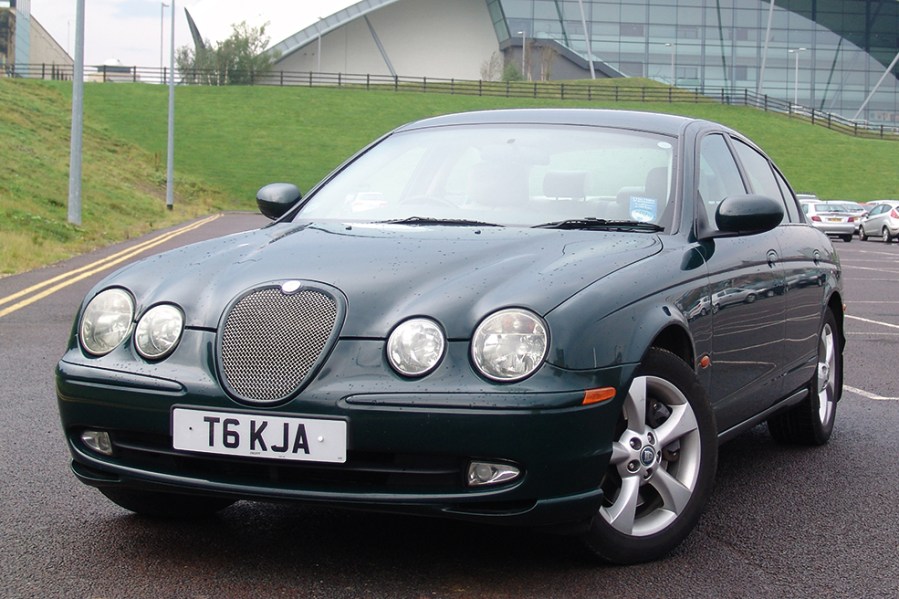
Bearing the name and face of its 1960s counterpart, the S-Type was Ford’s vision for modern Jaguar
The same approach would be employed by owners BMW for its MINI project a few years later in 2001. While earlier prototypes had taken a more literal approach similar to that of the Nissan Pao, the production-ready R50 MINI took its 1960s influences and morphed them into a more refined, modern package; today, the R50’s successors form an entire range of retro-inspired models of all sizes.
The Fiat 500 – a car which owes as much to the Pike Factory ethos as to its own 1960s ancestor – saw the Italian brand follow the same playbook from 2007 onwards, with predictable results.
One of the most recent examples of this 60s-retro school of design is the Alpine A110, whose design returned to its namesake original rather than continuing the evolution seen in Alpine’s 70s, 80s and 90s models.

The latest Alpine A110 is unapologetically similar to the 1960s original
1970s and 1980s retro redesign: a new era
The Alpine A110 is something of an exception to the rest of the modern car market, which appears to have entered a new age of retro design in recent years. As was seen in the early 2000s with the success of the MINI, recent bold moves by one manufacturer seem to have pushed others to follow – only this time, it’s the 70s and 80s in the spotlight.
While some manufacturers dabbled beforehand, Hyundai can be credited with cementing this latest trend with the introduction of the Ioniq 5 in 2021. Created with a view to pushing the brand upmarket, the model was foreshadowed by the unveiling of an officially ‘restomodded’ Hyundai Pony – the Giugiaro-designed model that turned out to be the main inspiration for the brand’s headline-grabbing crossover EV.
The Ioniq 5 wowed press and public alike with its sharp-edged 70s-inspired bodywork and unashamedly 80s ‘pixelated’ details. It was a fairly large family crossover but thanks to its Giugiaro-style hatchback proportions appeared somehow more compact and sporty.
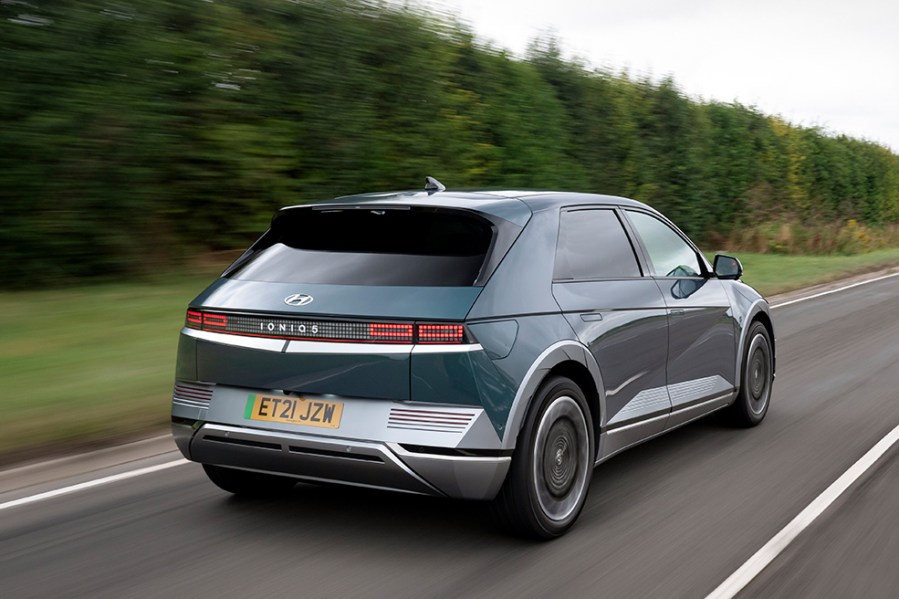
The Hyundai Ioniq 5 takes its inspiration from boxy Giugiaro designs of the 70s and 80s
If the ruthlessly efficient shape of the Tesla Model 3 is the ultimate evolution of the Ford Sierra’s late-80s, aero-informed ‘jellymould’ school of design, the Hyundai is more of a retro-futuristic exercise: an example of what cars might look like now had the 1990s and 2000s not cast their influence.
The success of the Ioniq 5 has sent the rest of Hyundai’s range on a similarly square-edged trajectory, with the recently revealed Santa Fe perhaps the most uncompromising example. The brand has hit upon a seam of nostalgia and enthusiasm in its customer base and wants to take full advantage – and other manufacturers are duly jumping on the bandwagon.
Renault recently showed off its new electric Renault 5 with a design inspired heavily by both the 1970s original and its later wide-bodied Turbo variants, along with a new Renault 4 taking a similar approach. Fiat meanwhile remains faithful to its hugely successful 500 range but will soon revive the original Panda – another iconic squared-off Giugiaro design.
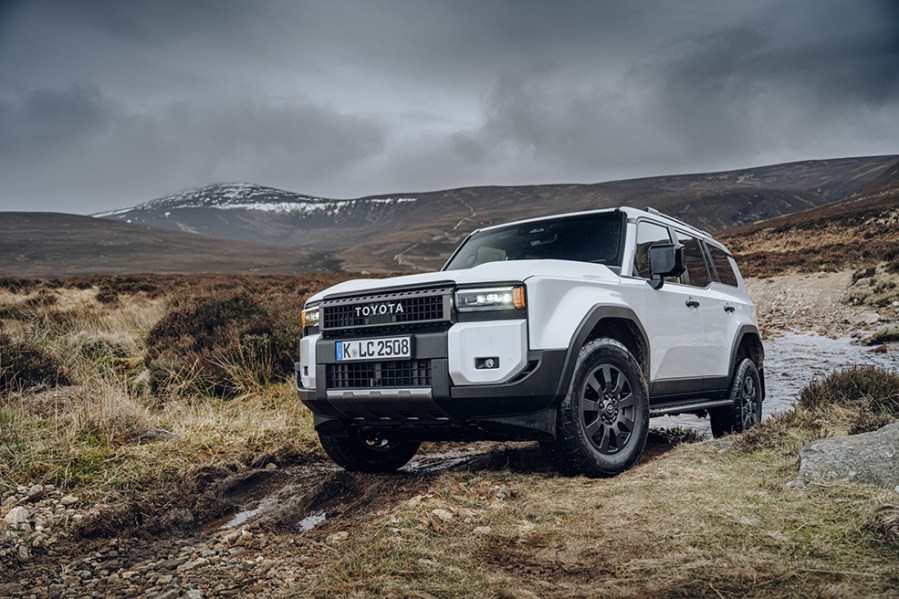
The latest Toyota Land Cruiser has fully embraced the trend for 70s ands 80s-style squared-off designs
Toyota recently introduced its new 80s-inspired Land Cruiser, replacing the softer edges of the outgoing model with a bluff front end, slab sides and a retro colour palette. A similar approach was taken by Suzuki with its latest Jimny, introduced in 2018 styled just like its SJ30 predecessor.
Even the freshly revised MINI Countryman, a car whose styling is still ultimately rooted in the 1960s, can be seen to have moved towards the 70s and 80s for its inspiration, with flatter sides, sharper creases, boxier wheel arches, squared-off headlights and pixel-detail rear lights. Squint a bit and you could almost imagine the Countryman as a modern Austin Allegro Estate. Almost.
If the fast-moving retro trends in fashion and music are anything to go by, retro-inspired car designs should turn a corner again in a few years’ time, perhaps closing an inspiration loop as designers look to the ‘jellymould’ cars of the early 90s that kicked off the retro revolution in the first place.
Could we see a modern, all-electric interpretation of the Ford Sierra one day? We wouldn’t bet against it.
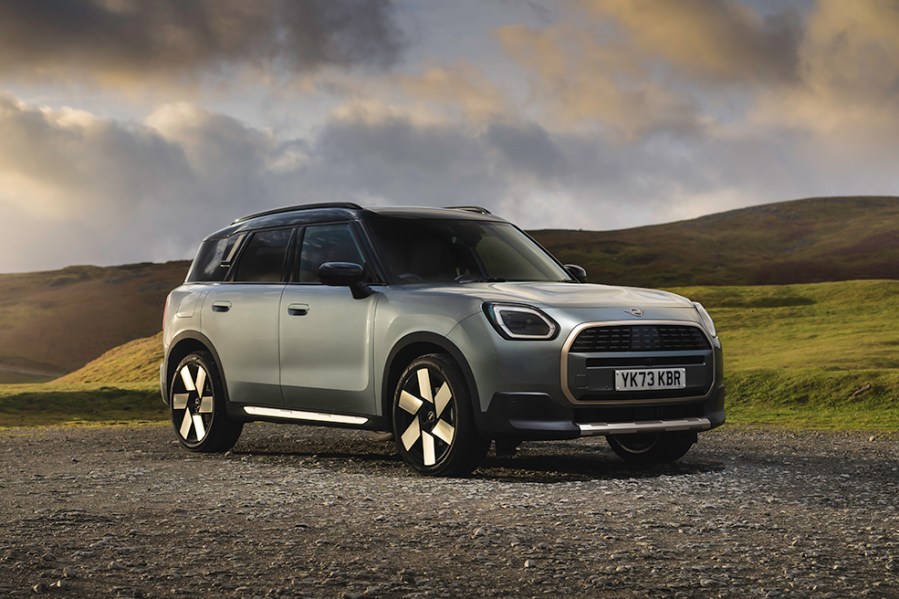
Modern MINI products continue to stray further from their original style reference, with definite nods to current 70s and 80s retro trends

